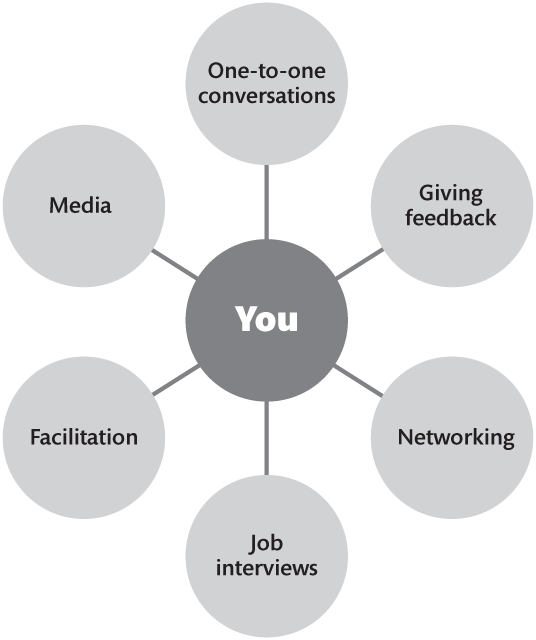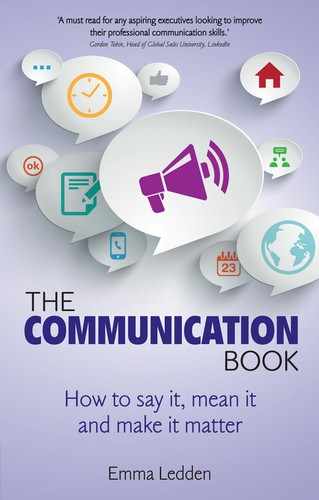INTRODUCTION
In the hierarchy of communication, face-to-face verbal communication is no. 1. Face-to-face verbal communication is the most effective and impactful way you have to connect, engage and influence.
Ninety per cent of the success of your verbal communication is determined before you speak.

The number-one reason why verbal communication fails every day is a lack of skill on the part of the speaker.
The skill of verbal communication is one very few people have the opportunity to master, and for many it feels like something just out of reach. Here’s the good news – effective verbal communication is not a case of pot luck, personality or genetics. Communication is a skill that can be acquired through preparation, patience, practice and the right approach.
The right approach
Our working day is a series of interactions; it is said we have 170 on average each day. You have these exchanges in offices, boardrooms and over the phone. You converse with people you know and people you don’t know, people who connect with you, people who lecture you and people you would rather not have to talk to at all, I imagine.
These exchanges are essential to your business relationships, career success and a positive daily experience. At the centre of these interactions are your verbal communication skills.
Verbal communication skills are the oxygen of relationships and the heart of career and business success. Yet all too often they fail. But why?
- Why do some people spend 30 minutes making small talk with you while others barely say hello?
- Why do some people give you their full attention while others won’t even make eye contact when you walk into their office?
- Why do some people speak to you with no regard for your feelings while others empathise fully?
Why is there not a simple, black-and-white answer to all this?
Because people are people – them, you and I.
We are humans talking to humans, and we must prepare for that fact. We must prepare to navigate the grey that is two different people with two different agendas, trying to get their needs met. We must remember there is no right or wrong.
We all see the world through our own unique, coloured glasses. We filter incoming information through our individual belief system, grounded in our exclusive experiences.
Great communicators understand and prepare for this. They have an approach they follow before they speak. They do not leave their communication success to chance.
To be a successful verbal communicator you must follow three simple steps.

1. Know the purpose
Your goal when you attend a job interview is very different to when you are at a networking event. The purpose of a team meeting is very different to the point of a media appearance. Technically, these interactions fall under the heading of communication, but they are very different in their purpose.
The first step to being an effective verbal communicator is to understand the purpose of the communication you are getting involved in, what you want and what you can realistically achieve.
2. Understand your listener
The only absolute in communication is that you are dealing with another human being. The only constant is that they will be inconsistent. The only security is the uncertainty of dealing with another person, their emotions and views.
Great communicators take the time to understand their listener.
THE VITAL QUESTIONS TO ASK YOURSELF
- What does your listener know, think and feel before you start talking?
- What do you want them to know, think and feel when you are finished?
It is vital you take the time to understand the person you have to interact with before you speak.
3. Prepare to speak
You know how it goes, don’t you? You plan what you are going to say, in your head. You’re crystal clear, in your head. You know your stuff, in your head.
The result: ‘That sounded so much better in my head’.
Whether you are talking to someone one to one or to a group, you must plan what you are going to say and even practise out loud how you are going to say it, so you can have flow and clarity.
The Communication Book takes this very simple, practical and unique three-step approach and applies it to the following scenarios: one-to-one conversations, giving feedback, networking, job interviews, facilitation and being interviewed by the media.

For each of these six business scenarios, the three steps will be explored fully and a ‘cheat sheet’ summarising the main tips will be at the end of each chapter.
At the heart of this book is the three-step approach in practice, with an explanation and one-page templates you can use to help you prepare for success in whichever scenario you find yourself.
Finally, The Communication Book also gives tools and techniques to improve your personal brand and non-verbal communication.
This book will show you how to prepare and deliver a great piece of verbal communication instantly and simply for the most important scenarios you face in business today.
